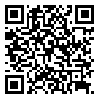BibTeX | RIS | EndNote | Medlars | ProCite | Reference Manager | RefWorks
Send citation to:
URL: http://hayat.tums.ac.ir/article-1-1602-en.html


 , Fatemeh Heshmati Nabavi *
, Fatemeh Heshmati Nabavi * 

 2, Tahereh Sadeghi3
2, Tahereh Sadeghi3 

 , Mohammad Naser Shafiee Jafarabadi4
, Mohammad Naser Shafiee Jafarabadi4 

 , Hamid Reza Behnam Voshani5
, Hamid Reza Behnam Voshani5 


2- Assistant Professor, Dept. of Health and Management, School of Nursing and Midwifery, Mashhad University of Medical Sciences, Mashhad, Iran ,
3- Assistant Professor, Dept. of Pediatrics Nursing, School of Nursing and Midwifery, Mashhad University of Medical Sciences, Mashhad, Iran
4- Instructor, Dept. of Head of English, School of Medicine, Mashhad University of Medical Sciences, Mashhad, Iran
5- Instructor, Dept. of Pediatrics Nursing, School of Nursing and Midwifery, Mashhad University of Medical Sciences, Mashhad, Iran
Background & Aim: The challenges that patients face after intestinal ostomy surgery can lead to impaired adjustment and self-efficacy. There is evidence suggesting these variables have reciprocal effects on each other. Therefore, the present study aimed to determine the correlation between adjustment and self-efficacy in patients with intestinal ostomy.
Methods & Materials: This descriptive correlational study was conducted on 76 patients with intestinal ostomy hospitalized in hospitals affiliated to Mashhad University of Medical Sciences using convenience sampling method in 2015. Research instruments were comprised of the demographic and disease information questionnaire, the Stoma Self-efficacy Scale, and the Ostomy Adjustment Inventory. The SPSS software v.19 using descriptive and inferential statistics was used to analyze the data.
Results: The results of Pearson correlation test showed a significant and positive linear correlation between the mean score of self-efficacy and the dimensions of adjustment: acceptance (P<0.001, r=0.518), anxious preoccupation (P<0.001, r=0.438), social engagement (p<0.001, r=0.488), and anger (P<0.001, r=0.384). Moreover, multiple regression analysis indicated that the dimensions of social engagement and acceptance have a significant and positive linear correlation with self-efficacy in patients with intestinal ostomy.
Conclusion: The results revealed that the dimensions of social engagement and acceptance of ostomy were the most important factors in relation to self-efficacy. Therefore, in order to care for patients with intestinal ostomy especially in the early months after surgery, it was recommended to help patients adjust themselves to the physical appearance of ostomy and maintain their social engagement, by designing and implementing appropriate educational and supportive interventions.
| Rights and permissions | |
 |
This work is licensed under a Creative Commons Attribution-NonCommercial 4.0 International License. |



